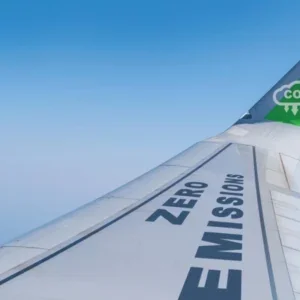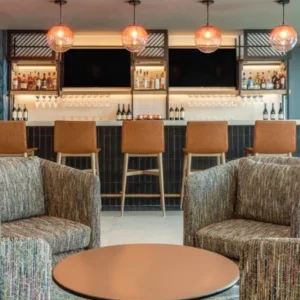The impending 2014 World Cup and 2016 Olympics were the catalysts for Brazil to finally embrace a privatisation movement that many of its airports have needed for almost a decade. In February 2012, the country’s National Civil Aviation Agency (ANAC) raised R$24.5bn (US$14.2bn) from the concession to operate and upgrade Guarulhos International Airport (São Paulo), Viracopos International Airport (Campinas) and Brasília International Airport – a value 347% higher than the auction’s minimum bid levels.
New management will hold 51% of a public-private partnership with state-owned operator Infraero, which promised not to interfere with daily operations, but will remain involved as it tries to reshape its image in pursuit of an initial public offering within the next few years. The partnership will pay off the bid total gradually over the concession period, with money going to Brazil’s Fund for National Civil Aviation to be spent on improving other national airports.
While details have been limited on how routes may develop at these airports over the next three to five years, government forecasts and sector analysts say domestic route growth will be the most pressing, and new routes through North and South America – particularly the US – should offer the greatest demand.
Beyond capacity
São Paulo-Guarulhos, Brazil’s largest airport, saw traffic grow by 12% in 2011 to reach over 30 million passengers. Brasília, the nation’s third-largest airport, experienced 9% growth and reached 15.4 million passengers. Viracopos-Campinas is Brazil’s ninth-largest facility and growing rapidly, up 50% in 2011 to 7.5 million passengers.
Brasília and Guarulhos were already congested by 2011, and Viracopos will surpass its capacity limit within the next three years. Of Brazil’s 20 largest airports, 17 are operating beyond capacity, according to a new study released by Brazil’s Institute of Applied Economic Research (IPEA).
Of the 13 airports in cities hosting the 2014 World Cup, ten are ‘critically’ beyond capacity. IPEA stated that there was a ‘remote possibility’ that all the work planned for major airports would be done by April 2014, but it could be delayed by Brazil’s molasses-like bureaucracy.
São Paulo-Guarulhos
Brazilian pension-fund firm Invepar and South African airport operator ACSA led the winning consortium for Guarulhos with a bid of R$16.2bn, and must invest R$4.6bn in improvements by 2014. Invepar concedes that capacity expansion at Guarulhos will be limited, likely topping out at 55 million passengers by 2022, but the consortium’s goal is to maximise the airport’s auxiliary revenue sources.
Pre-auction research showed that nontariff opportunities such as parking, shops, dining and hotel construction near Guarulhos offer the greatest growth potential.
Today, there are no hotels connected to the airport and just a handful are within a 20-minute drive. Most business travellers stay within São Paulo’s city limits, roughly an hour away.
Guarulhos has turned down ten new flight applications a month in recent years because of capacity limits, according to Invepar president Gustavo Rocha. An architectural design for Guarulhos’s new terminal 3 was chosen last year by Infraero, and earthwork has begun on the plot. At 230,000m², it will be the largest airport terminal in South America once complete. Construction will start in August 2012 and it should partially open in 2014 for the World Cup at a capacity of 7.5 million passengers a year. When fully complete, the airport will handle 18.8 million passengers a year, with 24 new departure points.
Boom time for Viracopos
About an hour north of São Paulo, Viracopos stands to gain the most from Guarulhos’s expansion limits, and has the virgin land available to become South America’s largest airport before its 30-year concession contract expires.
Consortium Aeroportos do Brasil offered R$3.8bn to win Viracopos, and must spend R$8.7bn within three to five years on a new terminal, runway and parking. Brazil’s Triunfo Participações, the consortium leader, along with Brazilian engineering firm UTC Participações and French operator Egis Avia, said it plans to help build a long-discussed passenger railway that would connect the airport to São Paulo, where customers are eager for an alternative to Guarulhos.
"We’re going to have a train – I don’t know if it’ll be high-speed, but we’ll help facilitate [its] investment," said Carlo Bottarelli, Truinfo president. "We haven’t put it in our business plan because from our point of view it is a public investment, but for us the train [is an indicator of] the growth of Viracopos."
Viracopos airport’s expansion may offer the greatest benefit to the small but growing Brazilian airline Azul. Operating since December 2008 with Viracopos as its hub, Azul is now Brazil’s third-largest airline behind TAM and GOL. It operates 70% of the flights out of Viracopos and should pursue its first international routes in 2012.
São Paulo route growth
Developing Viracopos and Guarulhos in tandem could offer tantalising competition for São Paulo’s route development. If Guarulhos saturates flight expansion by 2022 as expected, Viracopos should have its second runway open by then and be ready to win over the region’s route growth, according to Bottarelli.
New routes will likely favour North and South America, particularly the US, where Brazilians have tagged China as the fastest-growing tourist group, according to ANAC research. The US-Brazil Open Skies Agreement will see capacity limits end in October 2015, freeing up huge growth potential and competition for airlines in each market.
In January, American Airlines, which sports the most flights between Brazil and the US, announced the expansion of its daily routes to three Brazilian cities, and, according to sector analysts, would love to beef up its service in capacity-controlled São Paulo. Augmenting the service to Miami would be a priority, with Brazilians ranked as the number-one foreign tourist group in Florida in 2011, up 41% on 2010.
Panama’s Copa Airlines will add Recife as its seventh Brazilian route in June, and has been one of the more aggressive airlines to expand in Brazil in recent years. Entering Viracopos and more flights to Guarulhos could be the next additions when slots become available.
Brasília: international prospects
Consortium Inframerica, which includes Brazilian construction firm Engevix and Argentinian operator Corporación América, won the Brasília International Airport contract with a bid of R$4.5bn, and must spend R$2.8bn on a new terminal and parking before 2014.
Corporación América is the majority owner of Aeropuertos Argentina 200, operator of 33 Argentinian airports.
It is also the operator of Brazil’s first privatised airport, São Gonçalo do Amarante, which was auctioned in 2011 and is yet to be built.
Ideally located in the nation’s centre, Brasília could evolve into a strong international hub that rivals and relieves São Paulo and Rio de Janeiro, where more than 50% of the nation’s international flights concentrate. Copa, Taca, Pluna, American and Delta serve the Americas from Brasília, but ANAC research offered to bidders before the auction indicated new airlines would be encouraged for future route openings to promote competition.






